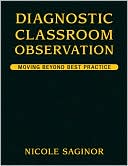

 |

|

Sold Out
Book Categories |
List of Figures
Preface
Acknowledgments
About the Author
1. Defining the "Technology of Good Instruction"
Assumptions Underlying DCO
Assumption 1: The Best Instruction Happens in an Active, Investigative Environment
The Research Supporting Assumption 1
Assumption 2: Content and Process Do Not Eclipse Each Other; Both Are Needed and Work Together for Sound Instruction (Beware the "Neat Activity Syndrome!")
The Research Supporting Assumption 2
Assumption 3: Learning Is an Interactive Process Enriched by Dialogue and Social Interaction in a Safe, Respectful Environment
The Research Supporting Assumption 3
Assumption 4: Technology Enhances Instruction
Research Supporting Assumption 4
Intended Uses
Supervision of Instruction
Program Evaluation
Large-Scale and Action Research
Key Distinctions of DCO
The Process/Content Interaction
The Analysis of Assessments
Emphasis on Teacher Knowledge of Content and Underlying Concepts
Emphasis on Teacher Skill in Inquiry and Constructivist Teaching
Classroom Culture
A Strong Protocol for Professional Development of Principals, Supervisors, and Teacher Leaders/ Mentors
Guidelines for Preconferences and Postconferences
Final Thoughts Before Proceeding
2. Ending the "Process Versus Content" Argument
The Math/Science Version of Diagnostic Classroom Observation
The Implementation Criteria
The Content Criteria
The Classroom Culture Criteria
Using the Math/Science Version
Method 1: Scoring the Examples in Chapter 2
Method 2: Focused Discussions
Method 3: ClassroomCo-observations
Discussion Questions
Concluding Thoughts
3. Learning to Read and Reading to Learn
Section 1: Learning to Read
The Literacy Version of DCO
The Implementation Criteria
The Content Criteria
Section 2: Reading to Learn
The Composite Version: Integrating Literacy Into Content-Area Instruction
Reading and Writing in the Content Areas
Section 3: Using the Literacy and Composite Versions
Method 1: Scoring the Examples in Chapter 3
Method 2: Focused Discussions
Method 3: Classroom Co-Observation or "Walk-Throughs"
Discussion Questions
Concluding Thoughts
4. Classroom Culture: Treating Everyone as You Would Be Treated
The Classroom Culture Criteria
Applying the Classroom Culture Criteria
Method 1: General Discussion Questions
Method 2: Focused Discussion Questions
Method 3: Scoring Culture
Concluding Thoughts on Equity of Access
5. Assessing Assessment
The Bullets: Characteristics of Good Assessments
Systematic
Ongoing
Help Students Adjust Their Thinking
Help Teachers Adapt Their Teaching
Based on Agreed-on Standards
Demonstrate Conceptual Closure at the End Point of a Unit
Choosing the Right Assessment for What You Want to Know
Quadrant A: Acquisitions
Quadrant B: Application
Quadrant C: Assimilation
Quadrant D: Adaptation
Creating Valid Constructed Response Items
Learning to Assess Assessment
Method 1: Matching Assessments With Instructional Strategies
Method 2: Co-observations
Concluding Thoughts
6. Putting It All Together
Examples: Why "Pretty Good" Is Not Good Enough
Putting It Together for Yourselves
Method 1: Scoring the Examples in Chapter 6
Method 2: Focused Questions
Method 3: Observing Classrooms in a More Extended Visit
Discussion Questions
Concluding Thoughts
7. Using Diagnostic Classroom Observation (DCO) to Improve Instruction in Your School
Section 1: Learning to Use DCO
DCO in Your Setting
The DCO Score Sheets
What They Are
How to Use the Score Sheets
How Not to Use the Score Sheets
Section 2: Adding DCO to Your Supervisory Practice
Tools for the Principal
Guidelines for the Preconference: Planning and Organization
Guidelines for the Observation: The "Cheat Sheets"
Guidelines for the Postconference
Introducing DCO to Your Teachers
Teacher Self-Assessment and Professional Growth Plans
Peer Coaching and Mentoring
Group Lesson Study and Study Groups
Concluding Thoughts
References
Appendix A. Section I: Planning and Organization Criteria: Questions for the Preconference: Math/Science Version
Appendix B. Section I: Planning and Organization Criteria: Questions for the Preconference: Literacy Version
Appendix C. The Math/Science Version
Appendix D. The Literacy Version
Appendix E. The "Cross-Walks"
Appendix F. The Score Sheets
Appendix G. The "Cheat Sheets"
Index
Login|Complaints|Blog|Games|Digital Media|Souls|Obituary|Contact Us|FAQ
CAN'T FIND WHAT YOU'RE LOOKING FOR? CLICK HERE!!! X
 You must be logged in to add to WishlistX
 This item is in your Wish ListX
 This item is in your CollectionDiagnostic Classroom Observation: Moving Beyond ''Best Practice''
X
 This Item is in Your InventoryDiagnostic Classroom Observation: Moving Beyond ''Best Practice''
X
 You must be logged in to review the productsX
 X
 X

Add Diagnostic Classroom Observation: Moving Beyond ''Best Practice'', , Diagnostic Classroom Observation: Moving Beyond ''Best Practice'' to the inventory that you are selling on WonderClubX
 X

Add Diagnostic Classroom Observation: Moving Beyond ''Best Practice'', , Diagnostic Classroom Observation: Moving Beyond ''Best Practice'' to your collection on WonderClub |